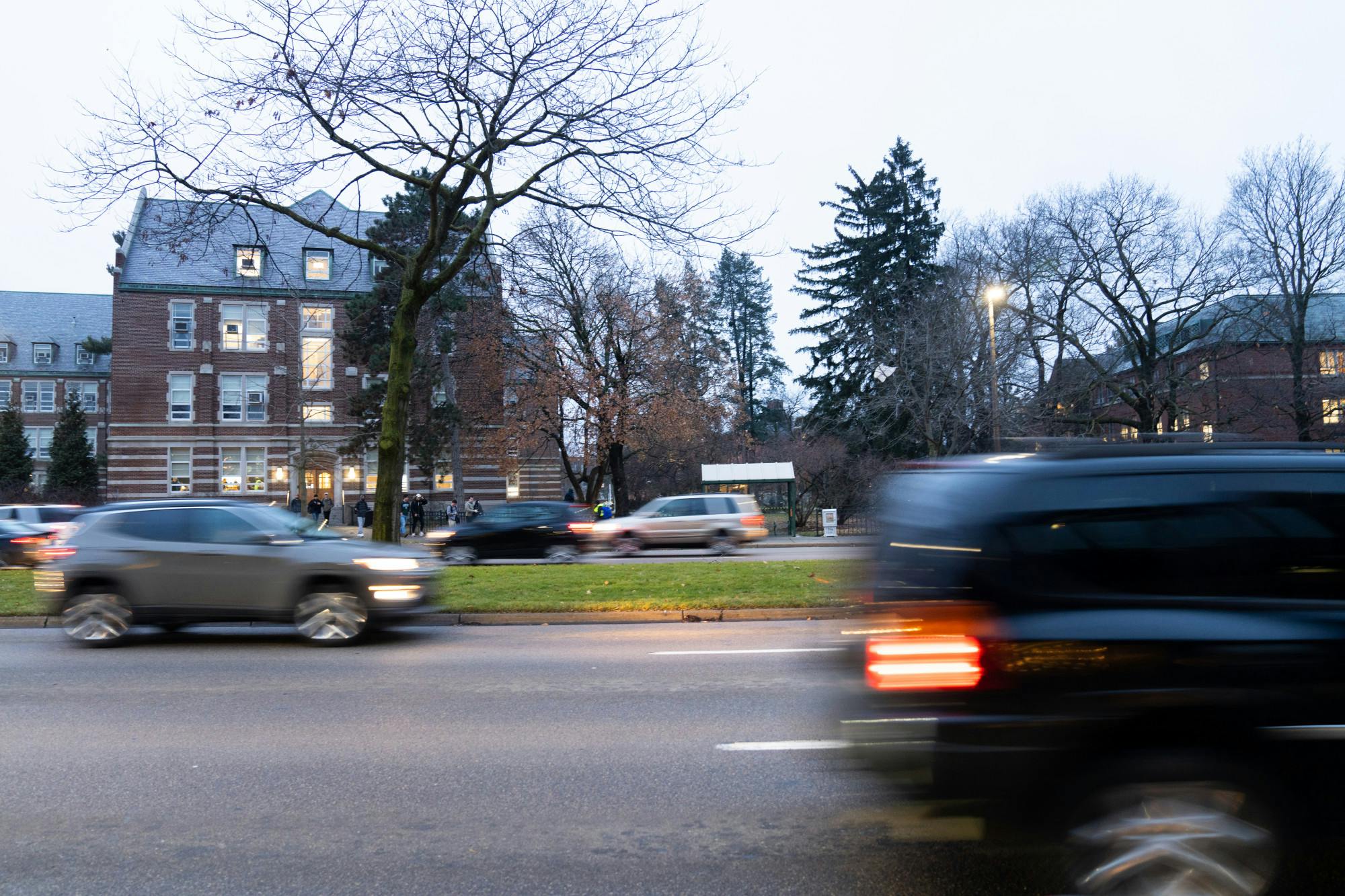Getting around on MSU’s campus is not always an easy feat. If it’s a crowded time between classes, a game day or cold outside, traveling from one destination to another can be a grueling task.
The struggles of moving around campus are clear when you look at the numbers. Campus is 5,200 acres, though most students and faculty use less than half that space in their daily routine. There are 60 miles of roads, 120 miles of pedestrian walkways, 20 miles of bike lanes and 26,000 parking spaces.
And each day, there are approximately 70,000 people and 30,000 vehicles trying to get from point A to point B.
For chemical engineering senior Catie Scott, the hardest part of driving on campus is finding a parking spot.
“It's really hard (driving) around the busiest times, and it's almost impossible to park,” Scott said.
Despite this struggle, Scott opts to drive because taking the bus “takes even longer” because some of the bus stops are not at a convenient distance for walking.
Finance senior George Nummer also drives on campus, which he said is convenient because there are places to park and he can stay out of the winter weather. Though campus is navigable, he said driving still comes with some challenges.
“I don't personally think it's that bad,” Nummer said. “The only time where it can be bad is at the times when classes are about to start, right before 10:20 or something leading up to that, it can be bad. But overall, I think it's like a very drivable canvas, and (I) pretty much just have to watch out for pedestrians.”
For students who don’t drive on campus, however, getting around can be trickier.
Journalism freshman Dominic Carroll primarily takes the Capital Area Transportation Authority, or CATA, buses to travel on campus. He said the bus is convenient, but often cramped. However, when Carroll has to leave campus for his internship, the bus schedule doesn’t align with his time frame, so he has a choice to make: scooter or Uber. Carroll said since he doesn’t want to ride a scooter in the winter, he is forced to take Ubers, which can be expensive.
For other students, riding the bus presents different challenges. Journalism senior Mariana Bittencourt and communications sophomore Anesa Jackson both live off campus and have experienced late and crowded buses.
“Sometimes it can be hard because usually the buses are packed — the ones that go off campus — so it can be hard, especially early in the mornings, because everyone is coming to campus,” Bittencourt said. “Usually there's a very good driver that stops and always picks me up, but I've seen bus drivers just pass and leave people behind because they couldn’t fit anyone else inside the bus.”
And once on the bus, the lack of space can at a minimum, be uncomfortable and at a maximum, be unbearable.
“Everyone's just like, bumping into each other,” Bittencourt said. “We're trying to hold our things. Sometimes you can barely hold the rail. It's very difficult. Sometimes you can barely stand.”
Jackson notices when the weather gets colder or rainier, the buses are more crowded and late more often, which she said is annoying.
“You're trying to fit in, and then you're standing, and then people are sitting, and then you go to different bus stops, and people don't get off," Jackson said. "It's just so frustrating, and it's just because I'm a little claustrophobic, so I hate being on a packed bus for too long.”
Jackson is tired of riding the buses so she plans on bringing a car from home to use instead. For Bittencourt, the solution lies mainly in walking as much as possible. Bittencourt said that the bus drivers’ kindness is also helpful.
“I feel like it's always packed, but some drivers are very nice, and they really try to work around (it),” Bittencourt said. “They know that it's not the best situation, so they try to be kind and understanding, and I feel like, at least for me, I'm very appreciative of that because we're all in the same boat.”
Though students and faculty experience some inevitable struggles while commuting, there are ways to minimize these issues. Communications Manager for Michigan State University Police and Public Safety Dana Whyte recommended students reach out to their professors to let them know they will be late, especially when the weather is bad.
Whyte’s biggest advice is to plan ahead, plan alternative routes and leave early. This can mean being aware of the upcoming weather or checking which parking lots are available.
Additionally, Whyte said students can contact the MSU parking services to ask questions via the website or social media. Due to the volume of questions that the police department receives regarding parking, Whyte recently set up a new Twitter account specific to parking where people can ask for help and see traffic updates.
Whyte said questions can range from the best lot to park in or how to get from one place to another. Along with the parking staff, Whyte checks the social media accounts every day to answer questions.
“If anyone has any concerns, or questions or comments or anything, they can definitely reach out to us at any point,” Whyte said. “We want to be able to be a resource for people and have those answers and provide guidance for our community. So if anyone has anything that they're wondering or would like clarification on, don't hesitate to reach out to us at the Department of Police and Public Safety.”





